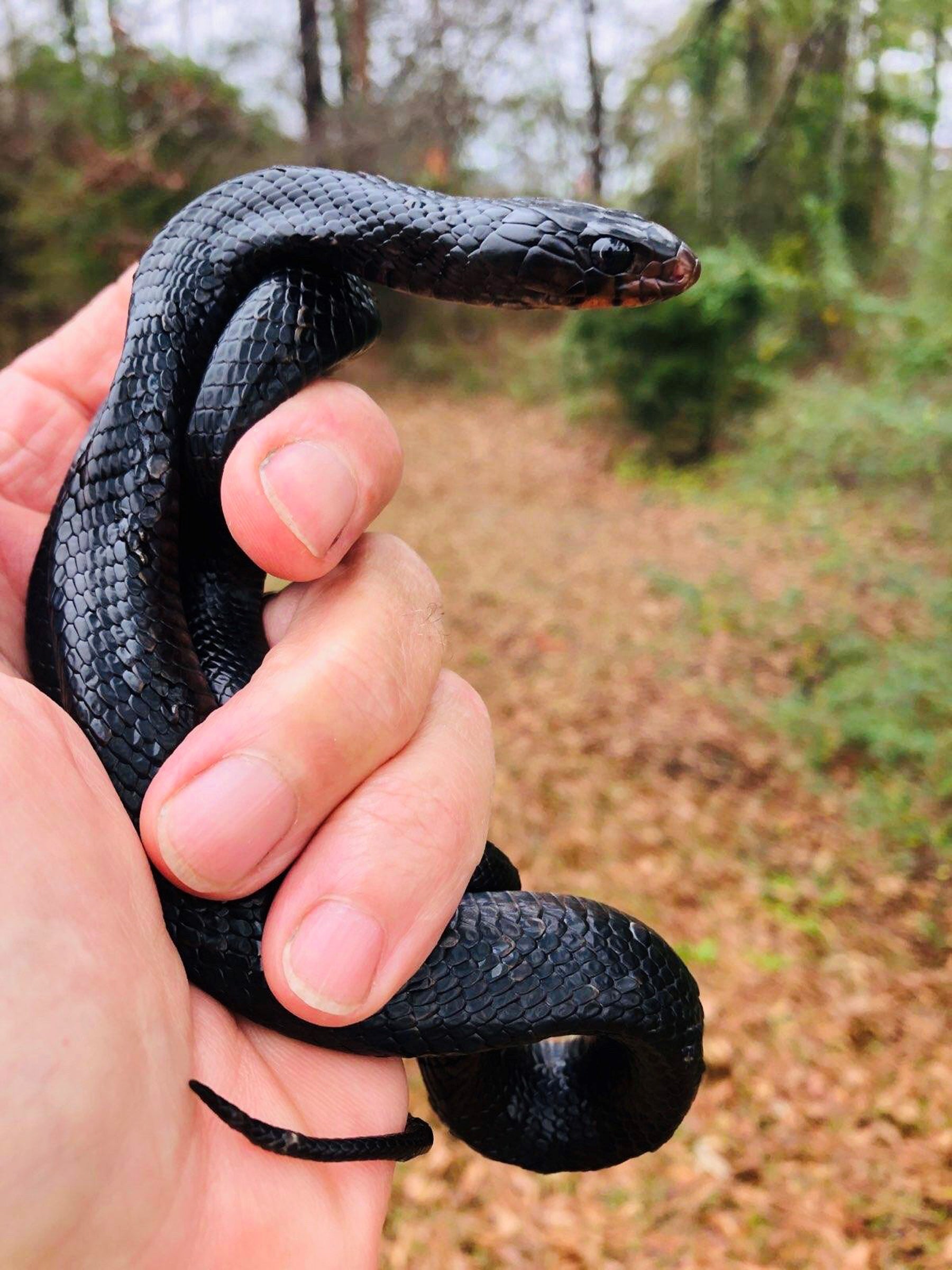By DAVID RAINER, Alabama Department of Conservation and Natural Resources
Traci Wood admitted holding the snake almost made her come unglued. No, she wasn’t afraid of the snake she was holding. It was the magnitude of the moment.
Wood, the Habitat and Species Conservation Coordinator with the Alabama Wildlife and Freshwater Fisheries (WFF) Division, had in her hands the first wild Eastern indigo snake documented in Alabama in more than 60 years.
“I’m not embarrassed to say that I was shaking when I held that animal,” Wood said. “This is a monumental benchmark in conservation for Alabama and the southeast region for this species.
“It’s a big deal, extremely big. It’s big for recovery efforts of a federally listed threatened species. It’s the first documentation of a wild snake in more than 60 years in Alabama. It’s proof that what we are doing through reintroduction is working and that captive snakes are acting like wild snakes after they are released.”
Chris Blankenship, Commissioner of the Alabama Department of Conservation and Natural Resources echoed the importance of the achievement.
“I am thrilled that we have documented wild reproduction of the Eastern indigo,” Commissioner Blankenship said. “It is great for the species, but I am also really happy for Traci and the staff who have worked for years to make this happen. They truly have a passion for their work, and I am so thankful for them.”
Technicians from the Auburn School of Forestry and Wildlife Sciences and the Auburn Museum of Natural History were out looking for documentation of indigo snakes as part of the long-term program to re-establish viable populations of Eastern indigos in their native habitat, mainly in longleaf pine forests in central and south Alabama.
“We try to document how long they are living, how far they are moving and how they’re doing healthwise,” Wood said. “The technicians were out and came across the snake as part of the monitoring effort. It was really no different than the monitoring we do for the released snakes. We’re out there assessing and trying to document their survival.
“There’s always the hope that we will find documentation of reproduction, and it finally happened.”
Wood said the technicians knew immediately what they had discovered when the snake was picked up.
“They knew because it was a hatchling-size snake,” she said. “It measured 2 feet in length, which is much smaller than the snakes we release from OCIC (Orianne Center for Indigo Conservation). It had no PIT (passive integrated transponder) tag or any indication we use in monitoring to indicate it was a released snake. Those released snakes are 5 feet in length or longer. They estimated the juvenile indigo at about 7 months old. It probably hatched in July or August.”
The Eastern indigo project started in 2006, and the program was able to start releasing captive-raised indigos in 2010 with 17 adult snakes released into the Conecuh National Forest. The goal is to release a total of 300 snakes to improve the chances of establishing a viable population. The project team has released 170 snakes to date. Wood said the decision-making and planning for indigo recovery through reintroductions started with late Auburn University professor Dr. Dan Speake in the 1970s and 1980s.
“It’s been a long process with a lot of sweat,” Wood said. “We have faced some criticism along the way. Then, when what you have hoped for happens, it’s extremely rewarding and overwhelming.”
During the early days of the indigo project, the released snakes were propagated from indigos that had been captured in the wild in Georgia. Partners in this project include Auburn Museum of Natural History, Auburn School of Forestry and Wildlife Sciences, U.S. Forest Service, U.S. Fish and Wildlife Service, Zoo Tampa, Zoo Atlanta, the Georgia Department of Natural Resources and the U.S. Army’s Fort Stewart, as well as the OCIC at the Central Florida Zoo, where the captive indigo breeding and health care are handled.
“We’re kind of at the halfway mark in the reintroduction,” Wood said. “It’s very exciting to see verification of reproduction at this stage of the project.
“It’s a huge testimony to the State Wildlife Grants program and working toward the recovery of a federally listed species. It is considered an experimental population. We were conducting research and making decisions that had never been done before with this species. It was a lot of groundbreaking work. Florida now has a reintroduction program, and a lot of their work is based on what we’ve done at Conecuh and lessons learned at Conecuh. Besides aquatic species, there isn’t another example of species recovery of a federally listed species through reintroductions.”








